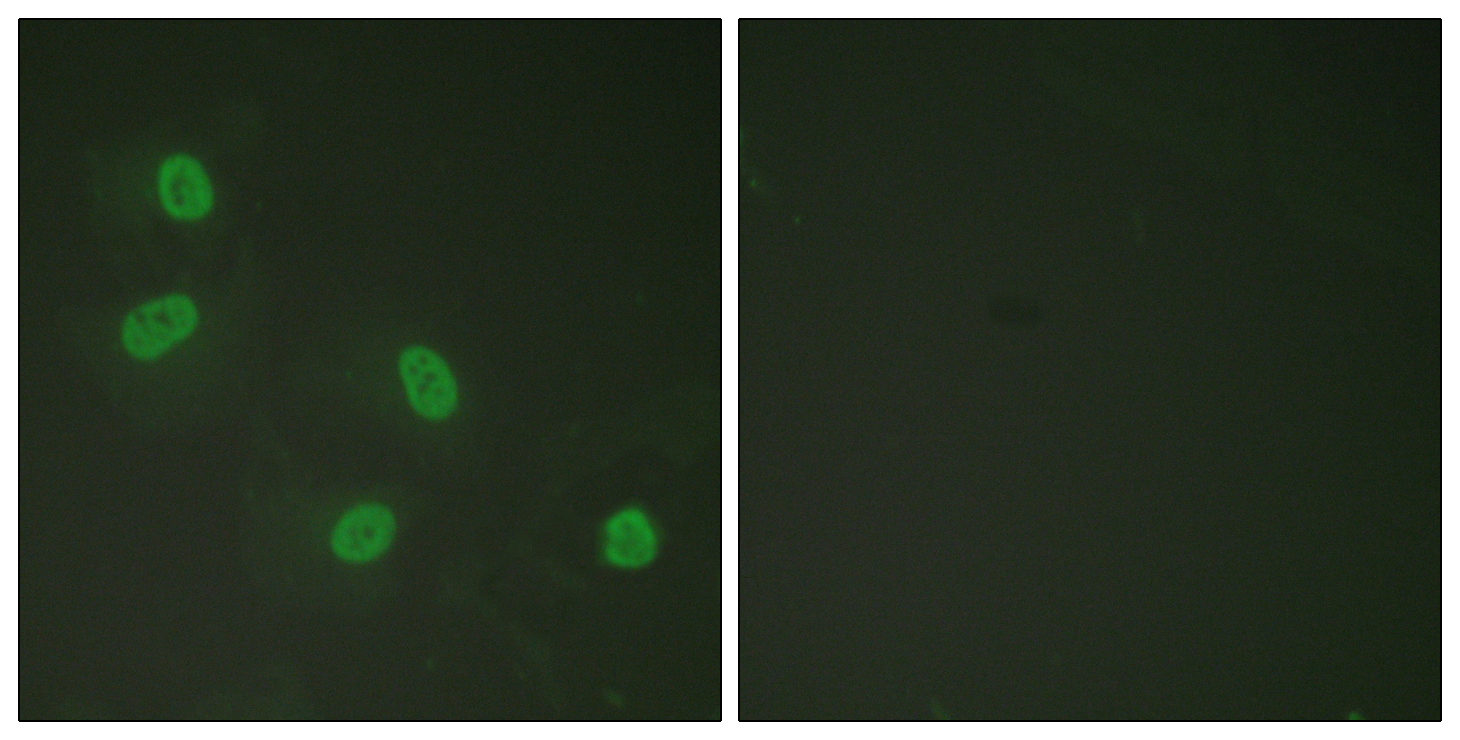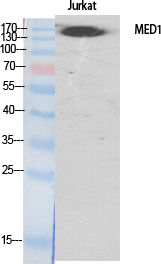Total TRAP220 Cell-Based Colorimetric ELISA Kit
- Catalog No.:KA3756C
- Applications:ELISA
- Reactivity:Human;Mouse
- Gene Name:
- MED1
- Human Gene Id:
- 5469
- Human Swiss Prot No:
- Q15648
- Mouse Swiss Prot No:
- Q925J9
- Storage Stability:
- 2-8°C/6 months
- Other Name:
- Mediator of RNA polymerase II transcription subunit 1 (Activator-recruited cofactor 205 kDa component) (ARC205) (Mediator complex subunit 1) (Peroxisome proliferator-activated receptor-binding protein) (PBP) (PPAR-binding protein) (Thyroid hormone receptor-associated protein complex 220 kDa component) (Trap220) (Thyroid receptor-interacting protein 2) (TR-interacting protein 2) (TRIP-2) (Vitamin D receptor-interacting protein complex component DRIP205) (p53 regulatory protein RB18A)
- Detection Method:
- Colorimetric
- Background:
- function:Component of the Mediator complex, a coactivator involved in the regulated transcription of nearly all RNA polymerase II-dependent genes. Mediator functions as a bridge to convey information from gene-specific regulatory proteins to the basal RNA polymerase II transcription machinery. Mediator is recruited to promoters by direct interactions with regulatory proteins and serves as a scaffold for the assembly of a functional preinitiation complex with RNA polymerase II and the general transcription factors.,PTM:Phosphorylated by MAPK1 or MAPK3 during G2/M phase which may enhance protein stability and promote entry into the nucleolus. Phosphorylated upon DNA damage, probably by ATM or ATR.,sequence caution:Contaminating sequence. Potential poly-A sequence.,similarity:Belongs to the Mediator complex subunit 1 family.,subcellular location:A subset of the protein may enter the nucleolus subsequent to phosphorylation by MAPK1 or MAPK3.,subunit:Interacts with GATA1 and YWHAH (By similarity). Component of the Mediator complex, which is composed of MED1, MED4, MED6, MED7, MED8, MED9, MED10, MED11, MED12, MED13, MED13L, MED14, MED15, MED16, MED17, MED18, MED19, MED20, MED21, MED22, MED23, MED24, MED25, MED26, MED27, MED29, MED30, MED31, CCNC, CDK8 and CDC2L6/CDK11. The MED12, MED13, CCNC and CDK8 subunits form a distinct module termed the CDK8 module. Mediator containing the CDK8 module is less active than Mediator lacking this module in supporting transcriptional activation. Individual preparations of the Mediator complex lacking one or more distinct subunits have been variously termed ARC, CRSP, DRIP, PC2, SMCC and TRAP. This subunit specifically interacts with a number of nuclear receptors in a ligand-dependent fashion including AR, ESR1, ESR2, PPARA, PPARG, RXRA, RXRG, THRA, THRB and VDR. Interacts with CTNNB1, GABPA, GLI3, PPARGC1A and TP53. Binds DNA.,tissue specificity:Ubiquitously expressed.,
- Function:
- eye development, in utero embryonic development, liver development, placenta development, embryonic placenta development, immune system development, DNA metabolic process, DNA replication, transcription, transcription, DNA-dependent, transcription initiation, regulation of transcription, DNA-dependent, regulation of transcription from RNA polymerase II promoter, transcription from RNA polymerase II promoter, transcription initiation from RNA polymerase II promoter, protein complex assembly, thyroid hormone generation, intracellular signaling cascade, sensory organ development, heart development, embryonic development ending in birth or egg hatching, positive regulation of biosynthetic process, positive regulation of macromolecule biosynthetic process, positive regulation of macromolecule metabolic process, positive regulation of gene expression, regulation of hormone levels, hemopoiesis,
- Subcellular Location:
- Nucleus . A subset of the protein may enter the nucleolus subsequent to phosphorylation by MAPK1 or MAPK3.
- Expression:
- Ubiquitously expressed.
- June 19-2018
- WESTERN IMMUNOBLOTTING PROTOCOL
- June 19-2018
- IMMUNOHISTOCHEMISTRY-PARAFFIN PROTOCOL
- June 19-2018
- IMMUNOFLUORESCENCE PROTOCOL
- September 08-2020
- FLOW-CYTOMEYRT-PROTOCOL
- May 20-2022
- Cell-Based ELISA│解您多样本WB检测之困扰
- July 13-2018
- CELL-BASED-ELISA-PROTOCOL-FOR-ACETYL-PROTEIN
- July 13-2018
- CELL-BASED-ELISA-PROTOCOL-FOR-PHOSPHO-PROTEIN
- July 13-2018
- Antibody-FAQs



